We replace the hub bearing when play appears. Bearing wear can be determined by increased noise when the car is moving
The operations for replacing the hub bearing with and without ABS are similar. The only difference is the installed speed sensor in the steering knuckle.
Prepare the car for work.
Place the car on an inspection pit or lift.
In order to unscrew the hub nut, place stops under the wheels.
Usually the hub nut is tightened with great force, so the assistant needs to press the brake while unscrewing the nut.
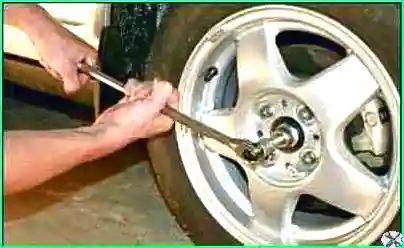
With a 32 head (Fig. 1), unscrew the wheel hub bearing nut.
Hang up and remove the wheel.
Remove the front wheel speed sensor (if installed).
Remove the brake disc.
Using a TorxT-30 key, unscrew the three screws securing the brake shield to the steering knuckle and remove the shield.
Disconnect the steering rod end from the steering knuckle
Remove the ball joint pin from the steering knuckle hole
Disconnect the shock absorber strut from the steering knuckle

Remove the steering knuckle (Figure 2) together with the hub from the splined tailpiece of the outer joint housing of the wheel drive.
When removing the steering knuckle from the drive, try not to pull the drive shaft out of the CV joint or gearbox.
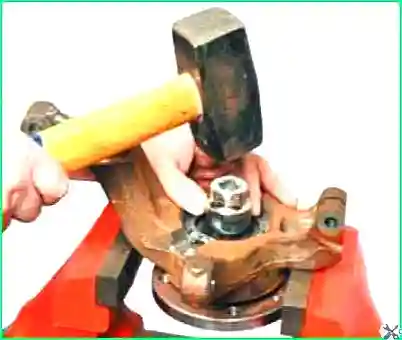
Lean the steering knuckle on the jaws of the vice (Figure 3).
By striking the end of the hub through a mandrel or head of the appropriate size
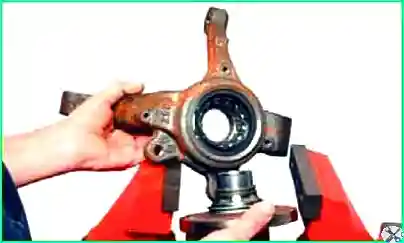
Press out the hub. In this case, the inner bearing ring, located closer to the hub flange, remains on the hub.
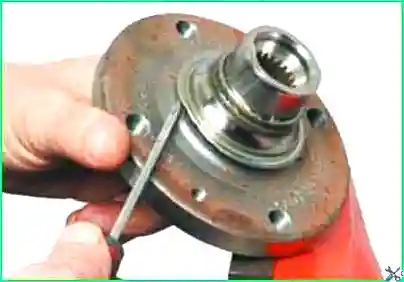
Use a screwdriver to pry off the protective washer covering the bearing seal
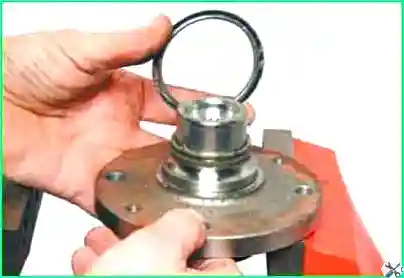
Remove the washer.
Clamp the hub flange in a vice.
Insert a chisel between the ends of the inner bearing ring and the hub flange.
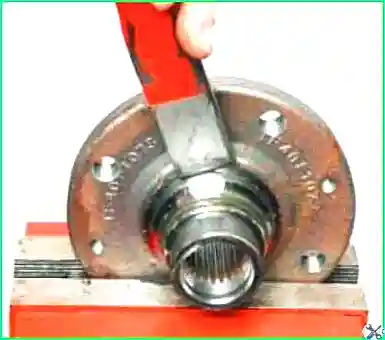
By striking the chisel with a hammer, we move the inner bearing ring along the hub.

Then, in the resulting gap, insert the puller jaws and finally press the inner bearing ring from the hub.
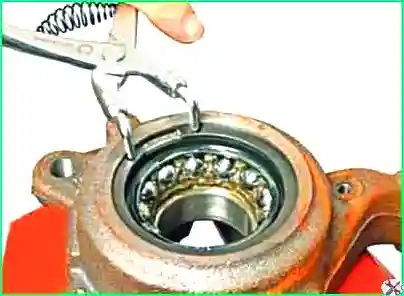
Using pliers for removing snap rings, remove the bearing snap ring from the groove of the steering knuckle.

Using a cup puller, press the bearing out of the steering knuckle.
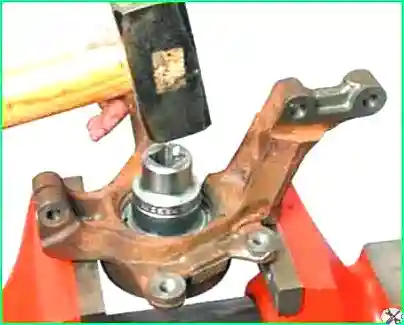
The bearing can also be pressed out using an impact method. To do this, rest the knuckle on the jaws of a vice.
By striking the end face of the outer ring of the bearing through a mandrel or head of a suitable size, we press the bearing out of the knuckle.
Installing the bearing
Before installing a new bearing, clean the mounting hole in the steering knuckle and the groove for the retaining ring.
Using a file, we clean the nicks on the hub from chisels.

Before pressing in the bearing, insert the wheel speed sensor mounting ring into the hole in the steering knuckle (with the paws that center the ring inside the knuckle).
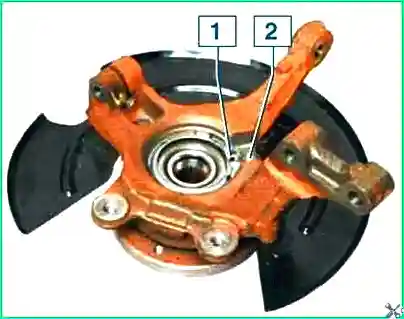
Orient the ring in the knuckle hole so that the speed sensor holder on ring 1 (Figure 13) is located in the groove of knuckle 2 (shown on the assembled hub unit for clarity).

Having installed the cup puller screw with a support washer, insert a new bearing into the knuckle hole.
On a car with ABS, the bearing should be installed so that it the dark-colored protective washer (made of magnetic material) was facing the wheel speed sensor mounting ring.
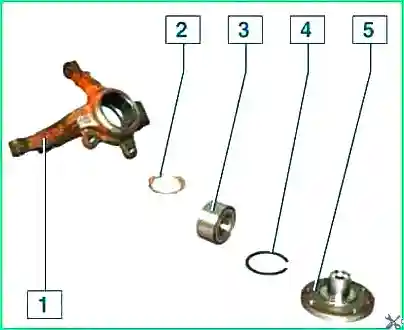
Figure 15 shows the hub assembly parts.
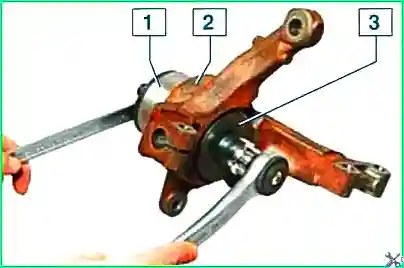
Press in the bearing, applying force through the puller cup to the end of the outer ring of the bearing, while the puller washer should rest on the steering knuckle (Figure 16).
After pressing in the bearing, install the retaining ring in the groove of the knuckle. Then we press the hub into the bearing.
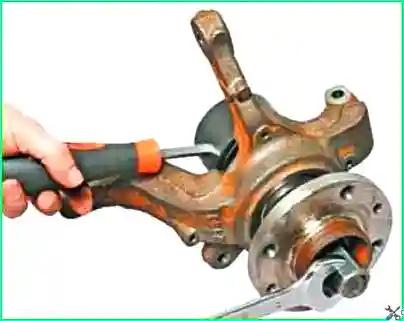
When pressing the hub, the puller cup should rest on the end of the inner ring of the bearing (Figure 17).
Further assembly and installation of the hub unit is carried out in the reverse order.





